The renovation of the Pioneer Cemetery in Whitehorse
One would think that, because it’s so close in both physical and emotional ways, that the Pioneer Cemetery in Whitehorse would have been a prime focus in my cemeteries project. But it had been neglected for so many decades that my heart just wasn’t in it. That has all changed now – the cemetery is well along on a major renovation, and I’m putting a great deal of time into documenting it now.
Originally called the 6th Avenue Cemetery, the Pioneer Cemetery is located in downtown Whitehorse, at the base of what we call “the clay cliffs.” Atop those cliffs is the Erik Nielsen Whitehorse International Airport. The image below is from Google Maps – click here to open an interactive version in a new window.
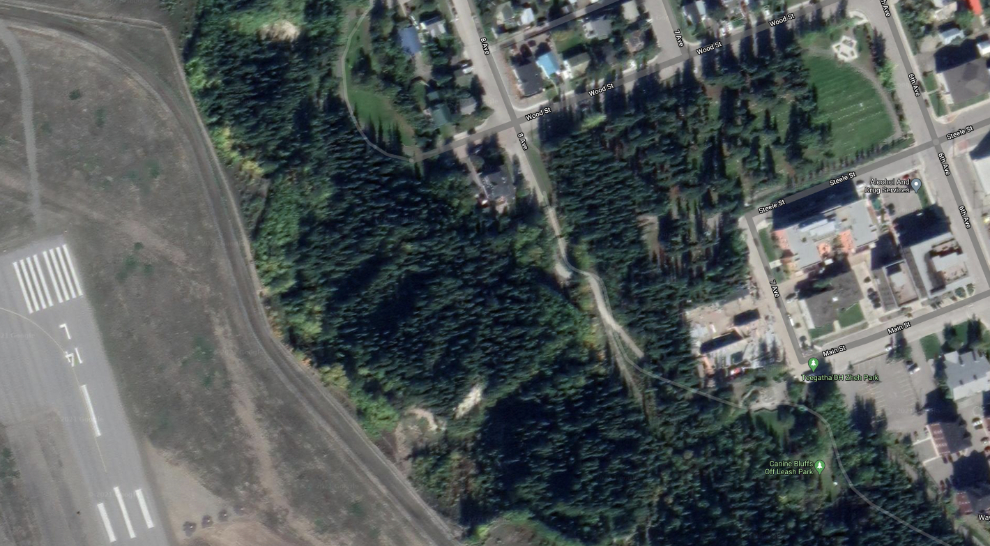
The main entrance to the Pioneer Cemetery used to be at the southeast corner.
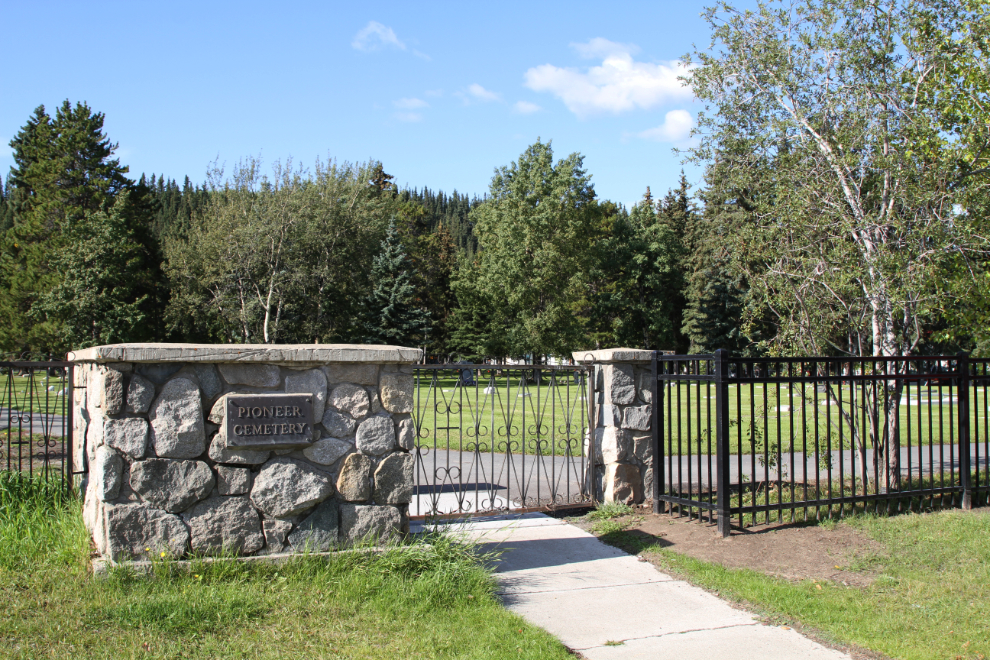
A grand new entrance has been constructed at the northeast corner of the cemetery, where the United States Military Cemetery was located during World War II. The new entrance has 3 interpretive signs that describe the history of the cemetery and a map of the 701 grave sites that are now known (701 by my count of the plots on the map).
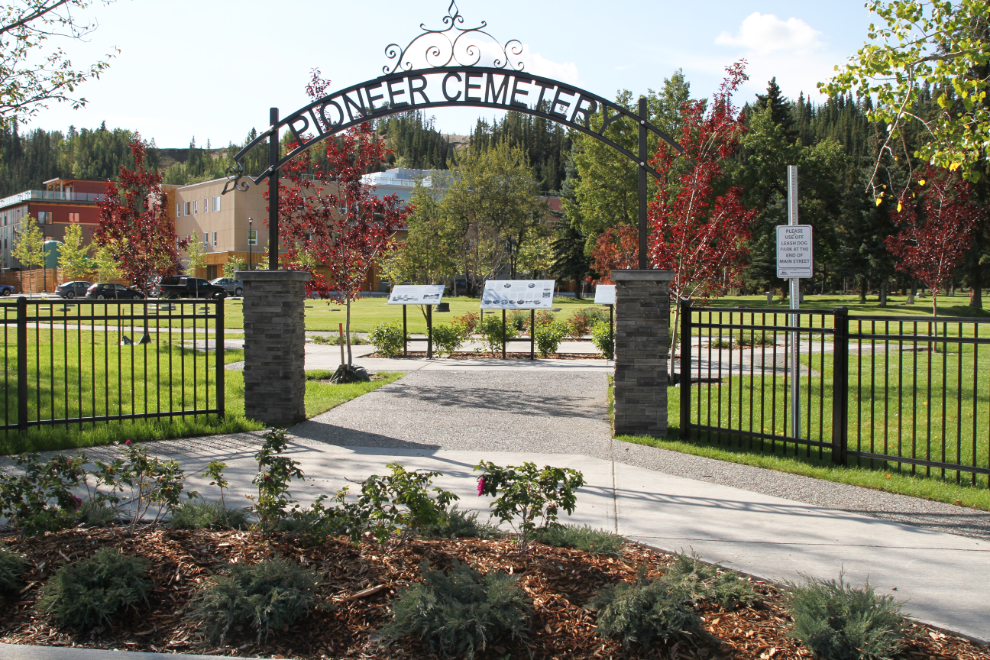
The beginning of the renovation planning dates back to 2012. One of the early parts of it was the construction of a leash-free dog park a couple of blocks away, as people walking their dogs in the cemetery and not cleaning up after them has been a long-standing complaint. The sign in the next photo is now in place at the main entrance.
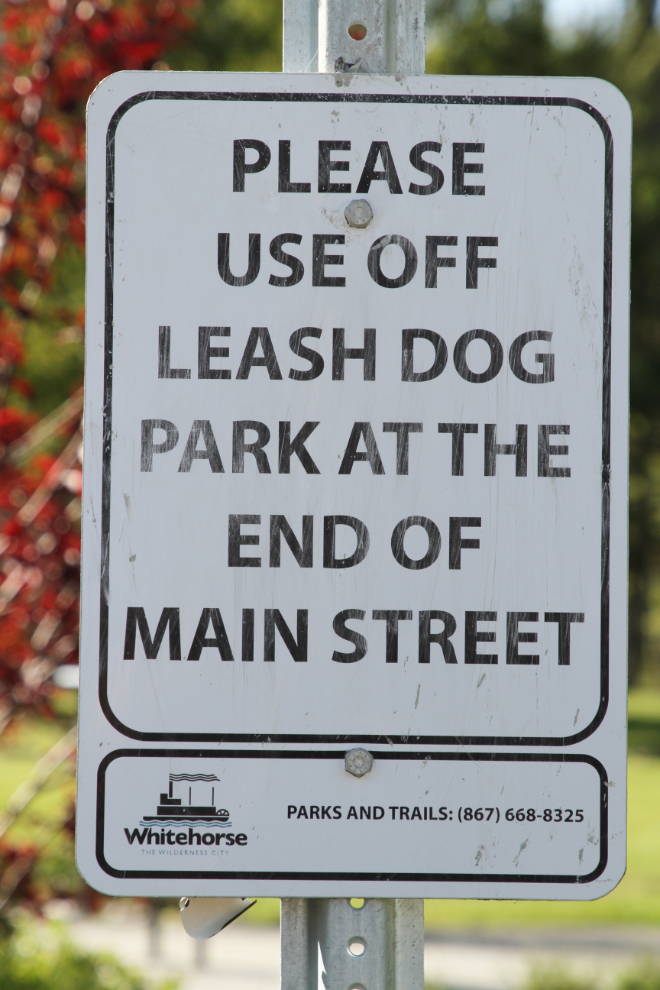
In February 2017, Ecofor Consulting brought in a Ground Sensing Radar unit to search for unmarked graves. There were surprises – both the number and location of lost graves. Although 800 grave sites is the number that’s been used for many years, and my list of reported burials has 808 names, there are, as I mentioned, 701 known grave sites marked on the map at the new cemetery entrance. I took photos of all 235 markers a few days ago for my cemetery Web site, so we’re still missing approximately 107 grave sites, and 673 grave sites need names.
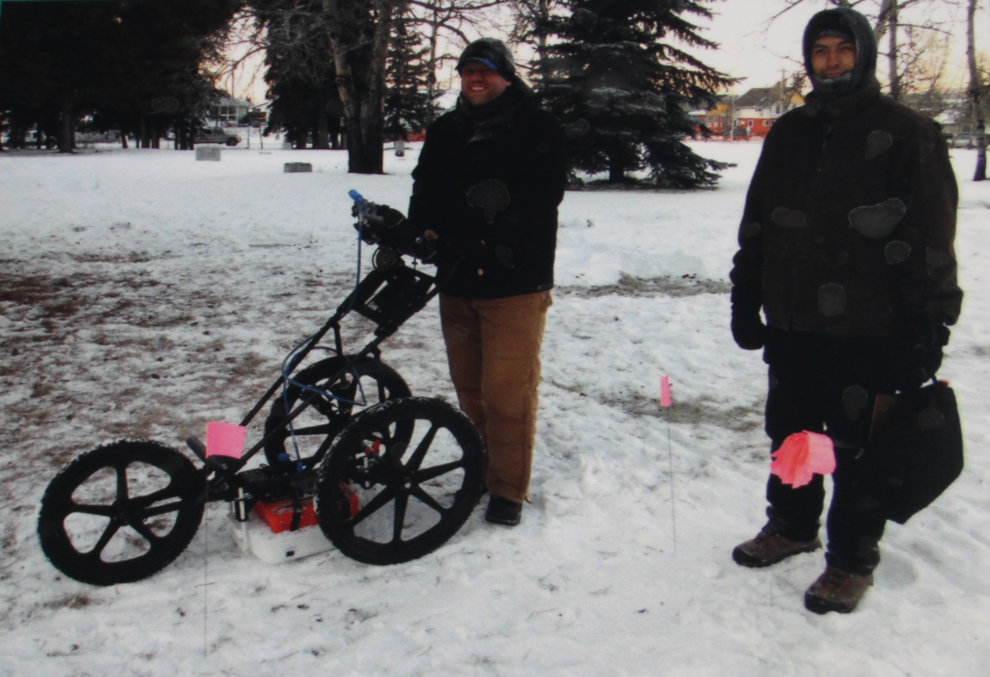
Last spring and summer, raising and levelling headstones that had sunk and/or shifted was the main priority – that work was done by crews from Sidrock. Part of that work involved building concrete bases for most of them.
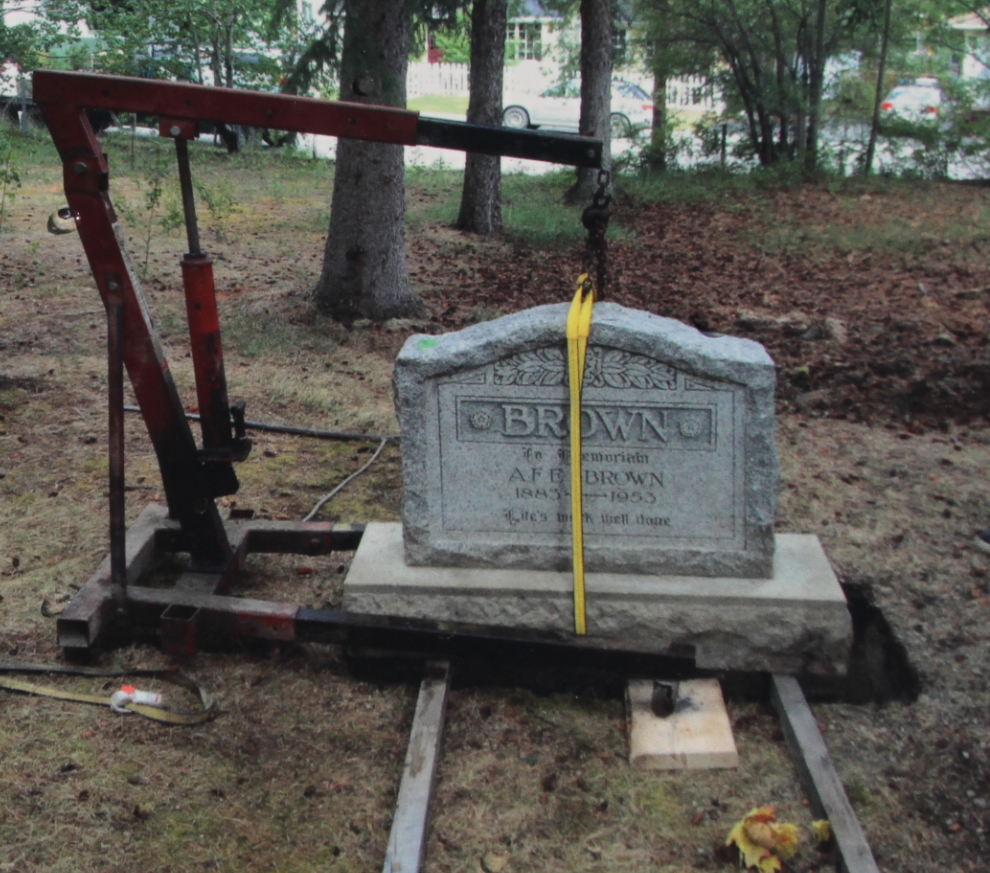
Once in their proper position, the headstones were all cleaned.
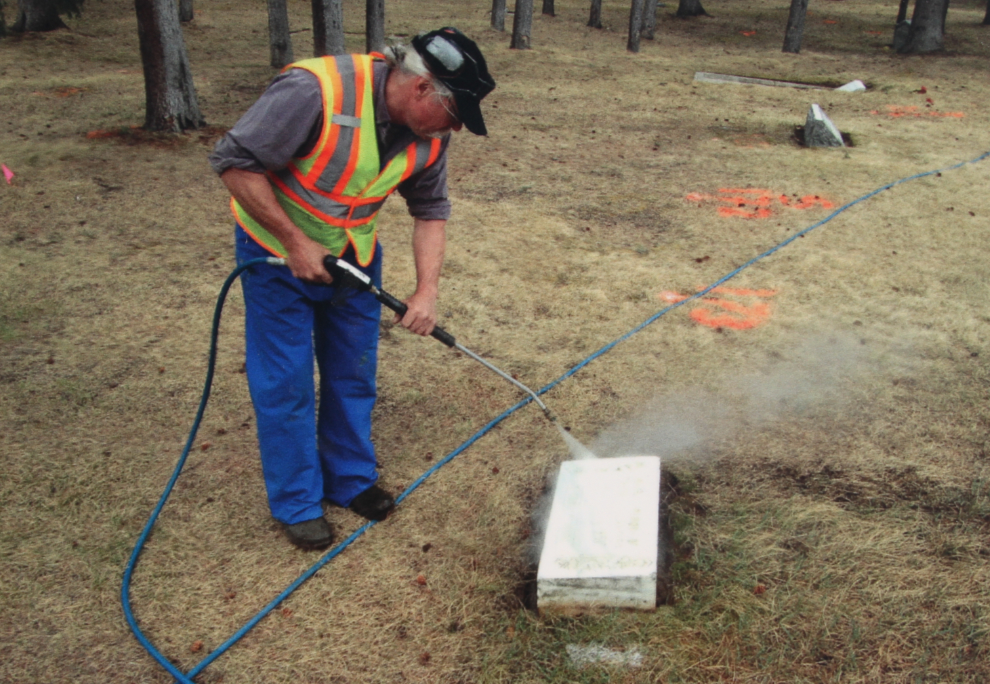
The next photo shows the front of the cemetery as it looks now. Known grave sites that don’t have markers now have concrete pads, and if names are ever found, markers will be installed – the type of marker is still being discussed.
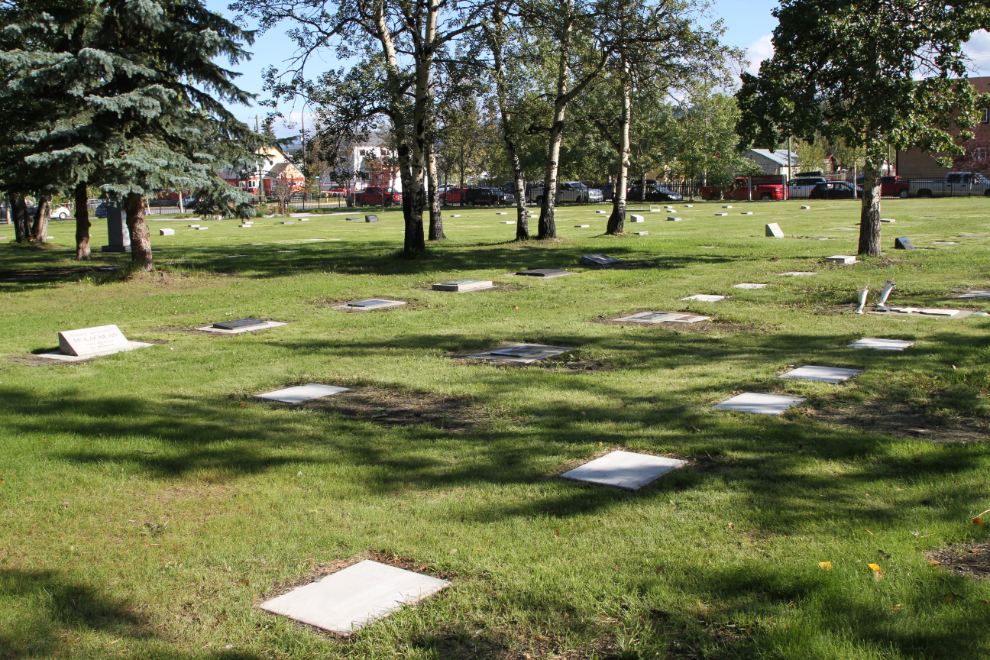
Further back in the cemetery, work continues. Known grave sites have been marked as seen in the next photo, and the concrete pads will soon be in place on them as well.
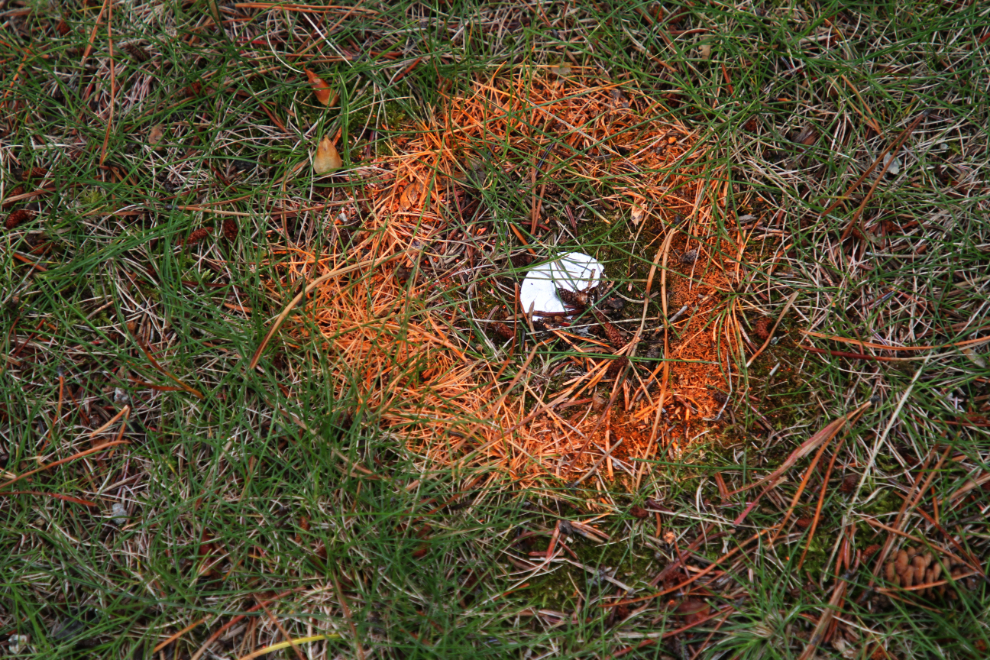
Completion of the new fence around the cemetery is rapidly approaching. It’s felt that a high-quality fence will greatly add to the respect that the cemetery gets, and it will eliminate the paths across the property that developed over the years.
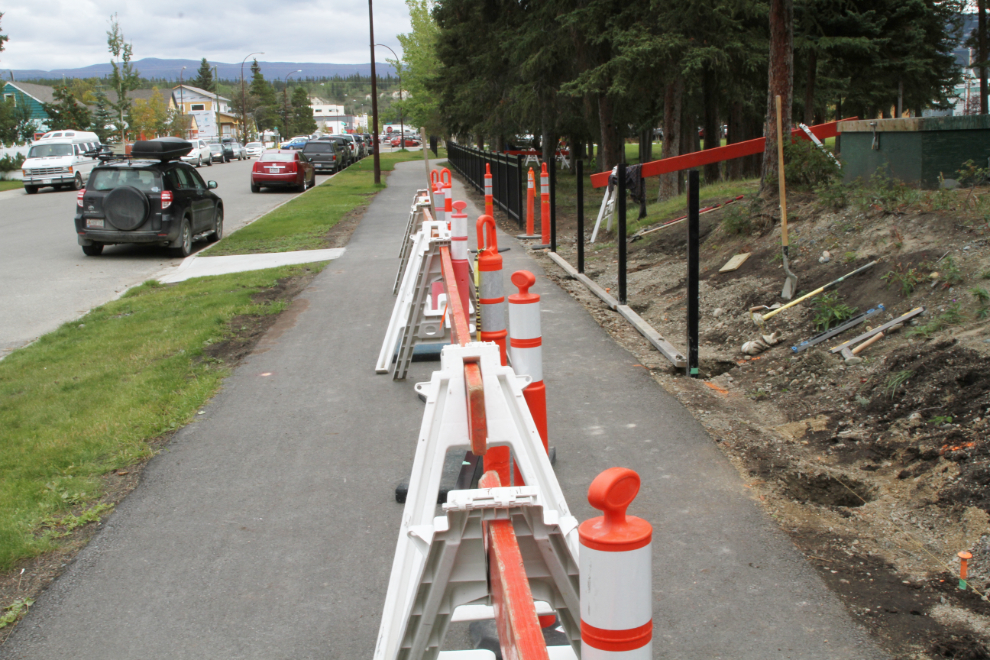
On Wednesday (September 5th), a Grand Re-opening ceremony was held. There wasn’t much promotion about the event, so the turnout was quite small.
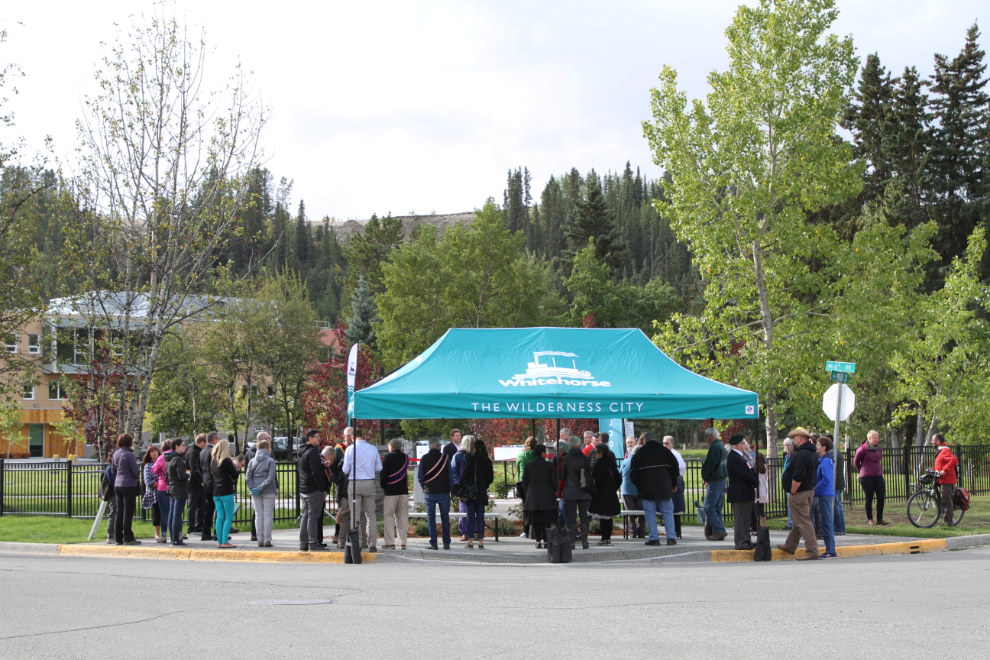
The Yukon’s Member of Parliament, Larry Bagnell, was the first speaker at the ceremony.
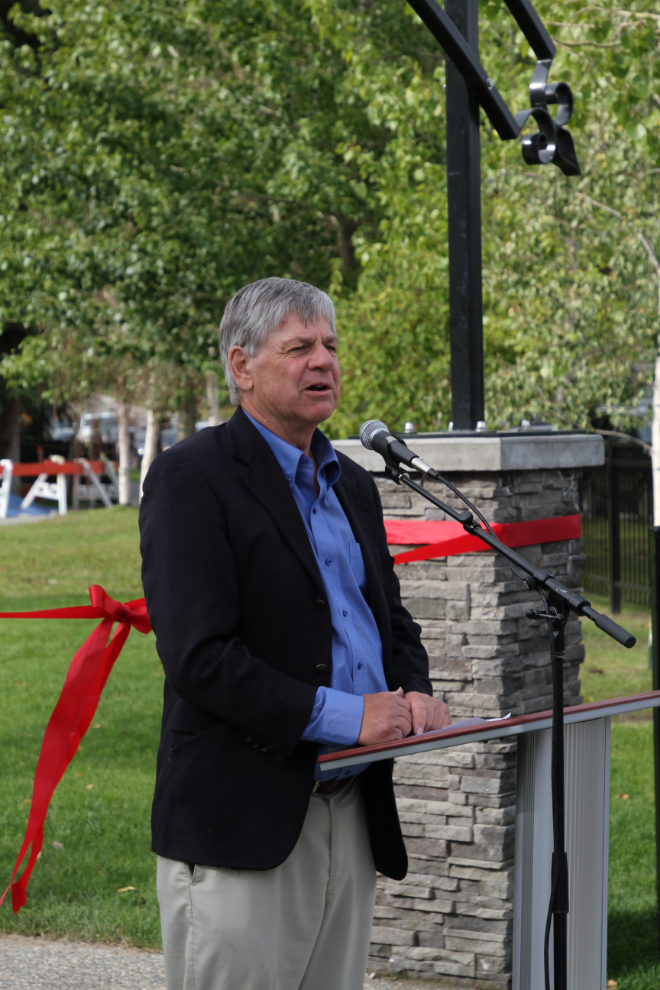
Gordon Steele (seen in the photo) and the late Grant Lundy, both of the Yukon Order of Pioneers, put countless hours into this project since planning began.’

Helmer Hermanson of the RCMP Veterans Association is another of the primary drivers behind the renovation. “Respect” was a word heard many times during the presentations. The respect that had been lost by neglect of the cemetery, and the respect that has returned.
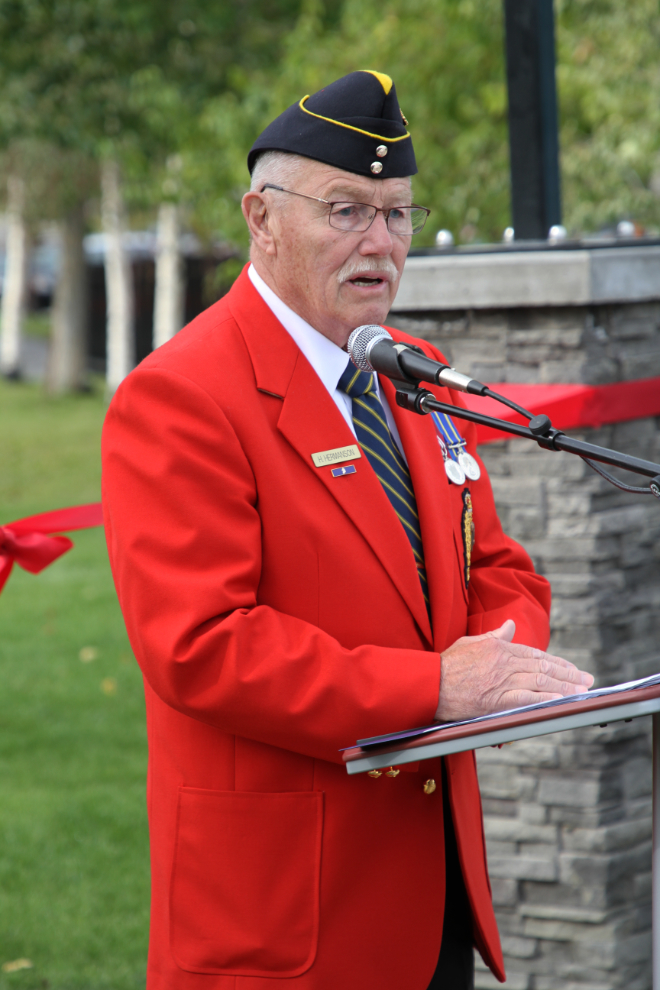
The ceremony was short and to the point, and soon the ribbon was cut. While there is still a lot of work to do, this is a project that everyone involved can be proud of.
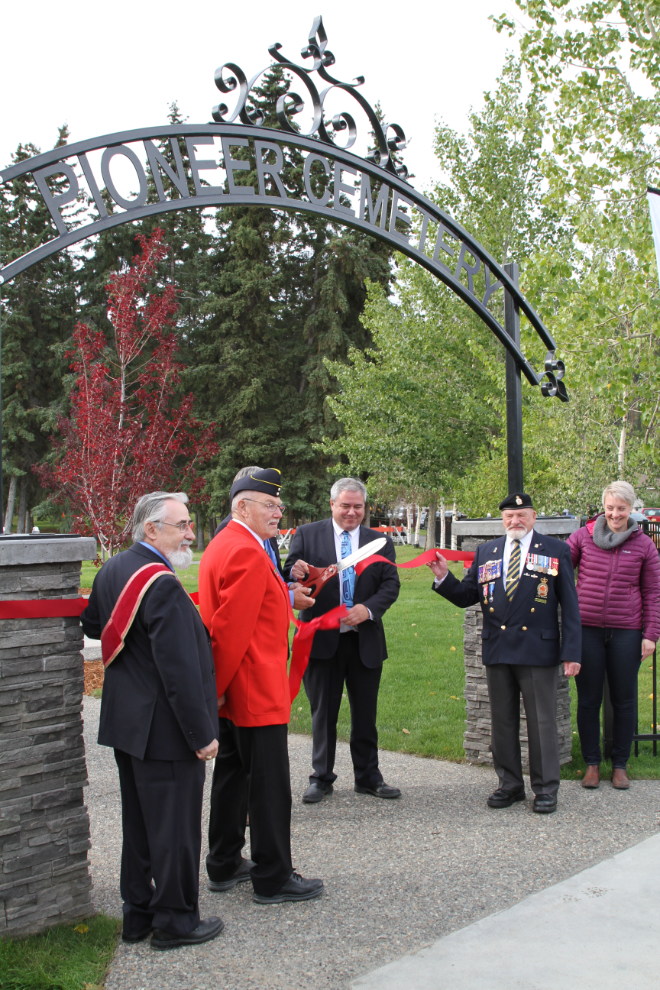
After the opening ceremony, tours of the cemetery were led. I went with consultant Ian Robertson, who showed his group some of the headstones that he found most interesting in various ways.
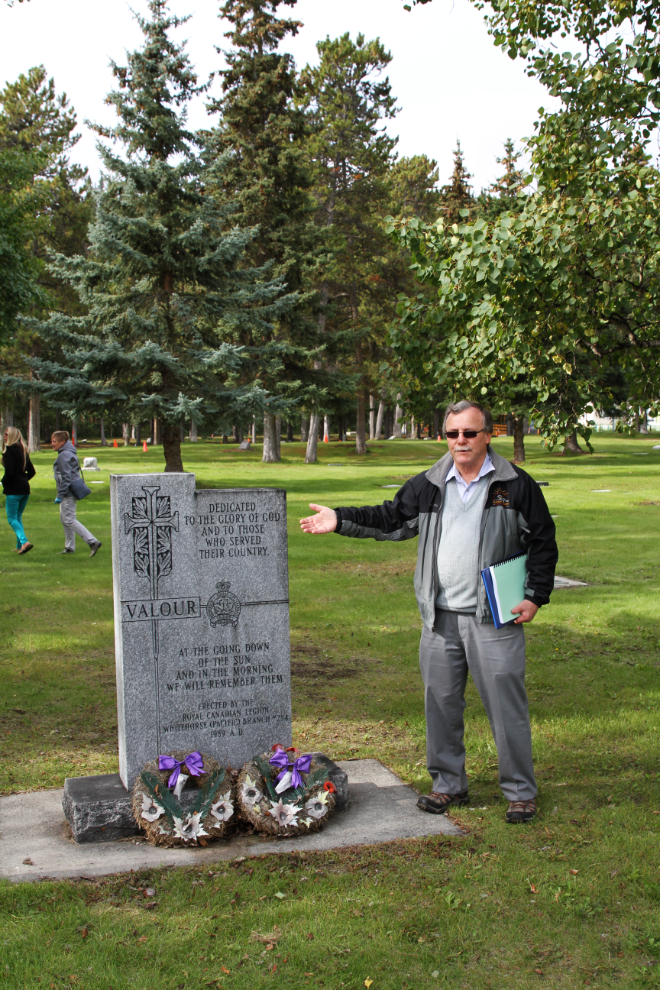
Now, we as a community have hundreds of grave sites to try to identify. Anyone with early photos of the cemetery can help fill in those blanks. In 1949, Robert Allen Burnside died the day after his 13th birthday. A cousin, Patty Hannah-Miller, sent me this photo of his grave, taken shortly after the headboard and surround were erected – there is no marker on the grave now. Several other photos and other information about people buried in the cemetery have been posted in my Yukon History & Abandoned Places group at Facebook, adding more pieces to the puzzle.
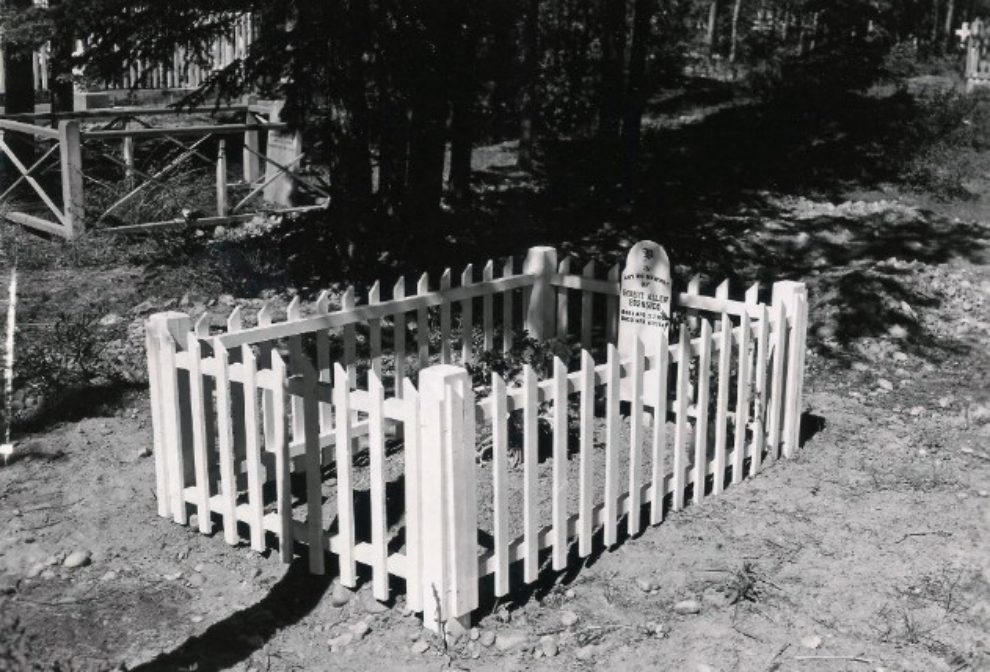
In some cases, even headstones present mysteries. An example is the one in the next photo, which just has the initials “IKG” carved in it. I haven’t found any name of my list of burials that matches those initials.
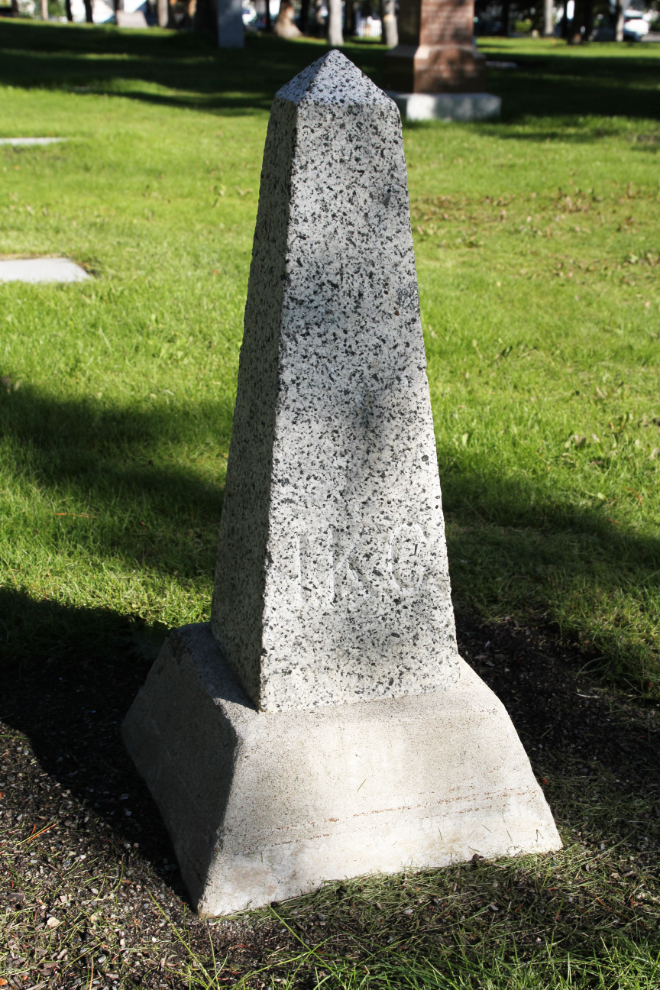
At the end of the war, all the men that had been buried in the United States Military Cemetery were moved to the States, and that ground is now the location of the new entrance. But at the lower left of the next photo is the grave of Max Cyr. He now has a headstone located some 60-70 meters away from that spot, and so far we have no answer as to how that can be.
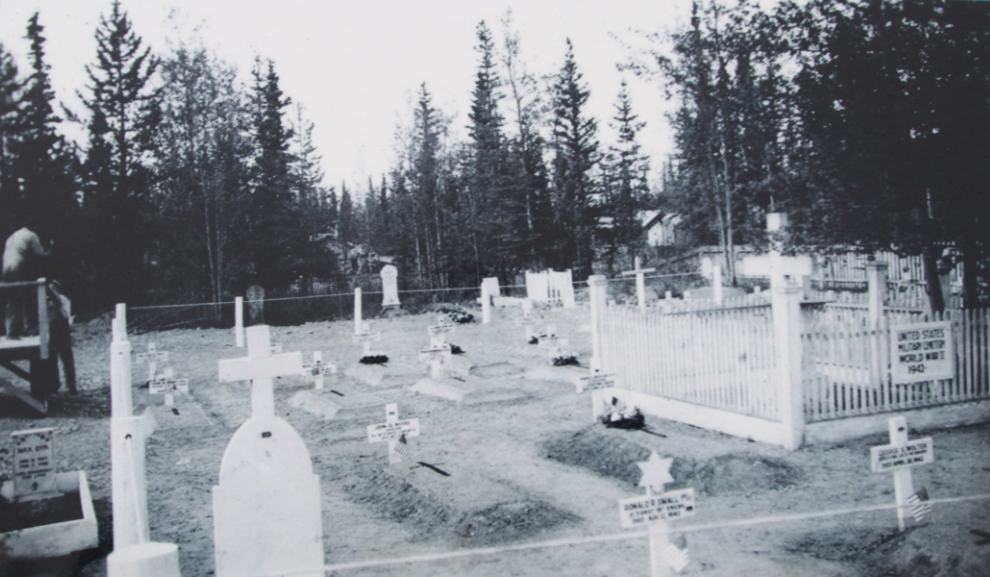
My part of the project is now primarily posting all of the photos I shot of the existing grave markers, on my Pioneer Cemetery pages. That will take 40-50 hours. I hope that I’m not yet finished with the motorhome for this season, though, and in 5 days I’m flying to Vancouver for the 50th anniversary reunion of my high school class, so I have a very busy month or so ahead.
